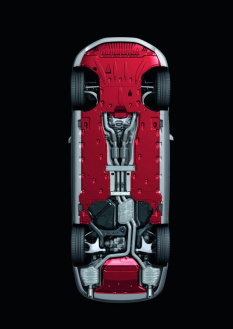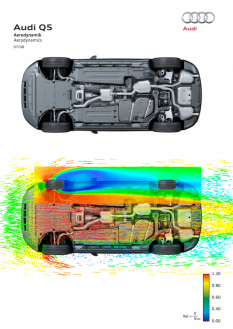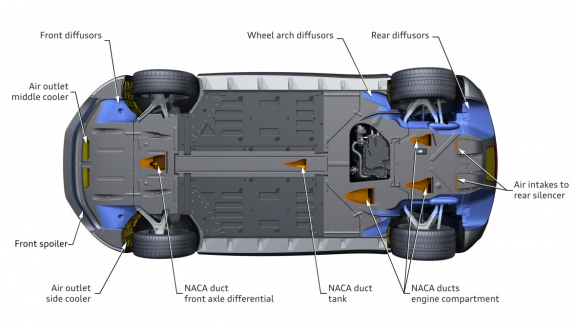Underbody
A car produces 40 to 50 percent of its total aerodynamic drag in and around the underbody, the wheels and the wheel arches. Audi has an excellent tool for optimizing these zones – the aeroacoustic wind tunnel. With its rolling floor and the four small treadmills on which the wheels can turn, it provides insightful and detailed analyses.
On many models, the development engineers opted for a virtually full-area underbody panel that leaves only the exhaust system and the rear axle exposed. So-called NACA ducts selectively conduct cooling air streams to the transmission’s oil cooler and other components. At the rear of the car, a cover plate and the mufflers form a diffuser surface that rises as it extends rearward.
Fine tuning of the underbody improved the drag coefficient in the A8 (Combined fuel consumption in l/100 km: 11.3 – 5.9; Combined CO2-emissions in g/km: 264 – 144)** by somewhat more than 0.03, which corresponds to 13 percent of the total drag. The polymer underbody panels also protect the sheet metal of the bodyshell and the mechanical assemblies against salt, moisture and stone impact, and eliminate the need for a conventional PVC underbody seal.
**Figures depend on the tires/wheels used.
Status: 2011


